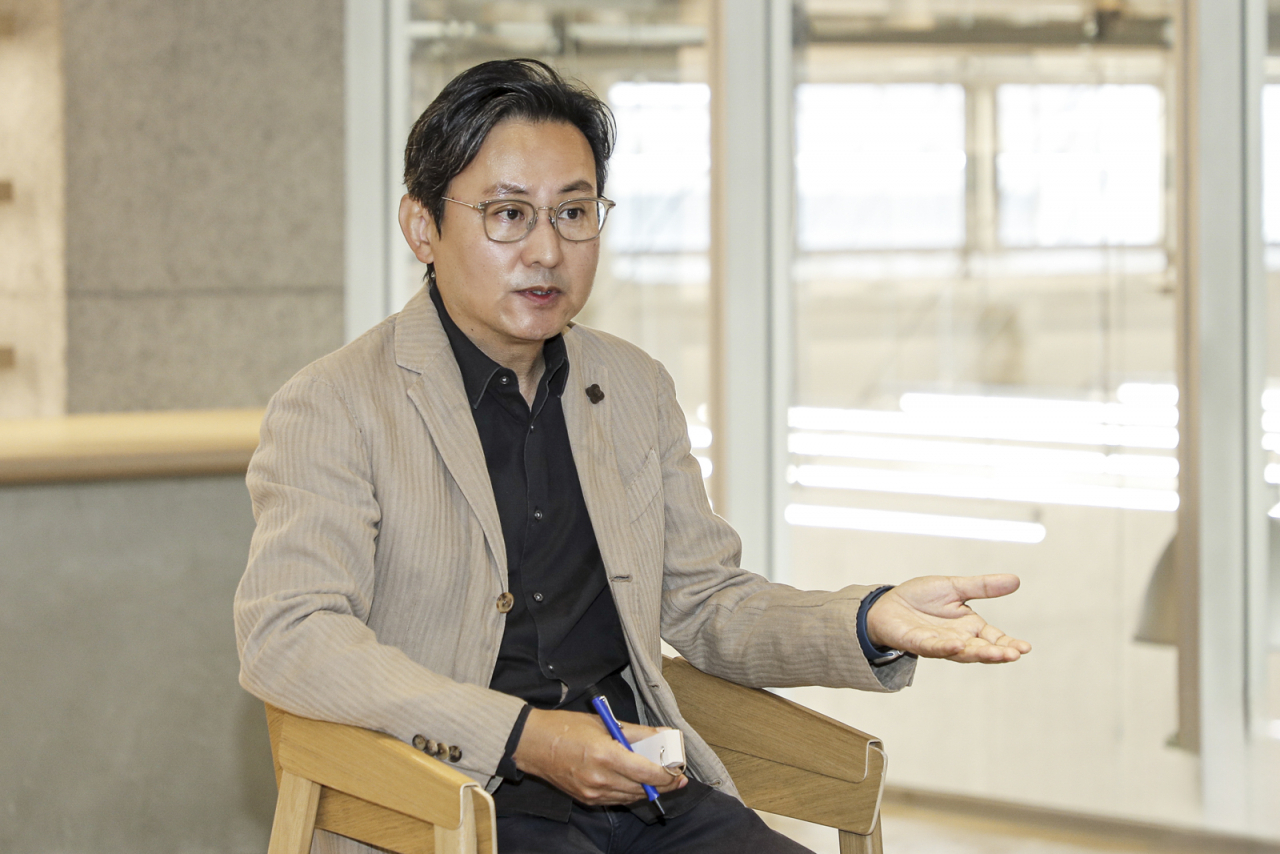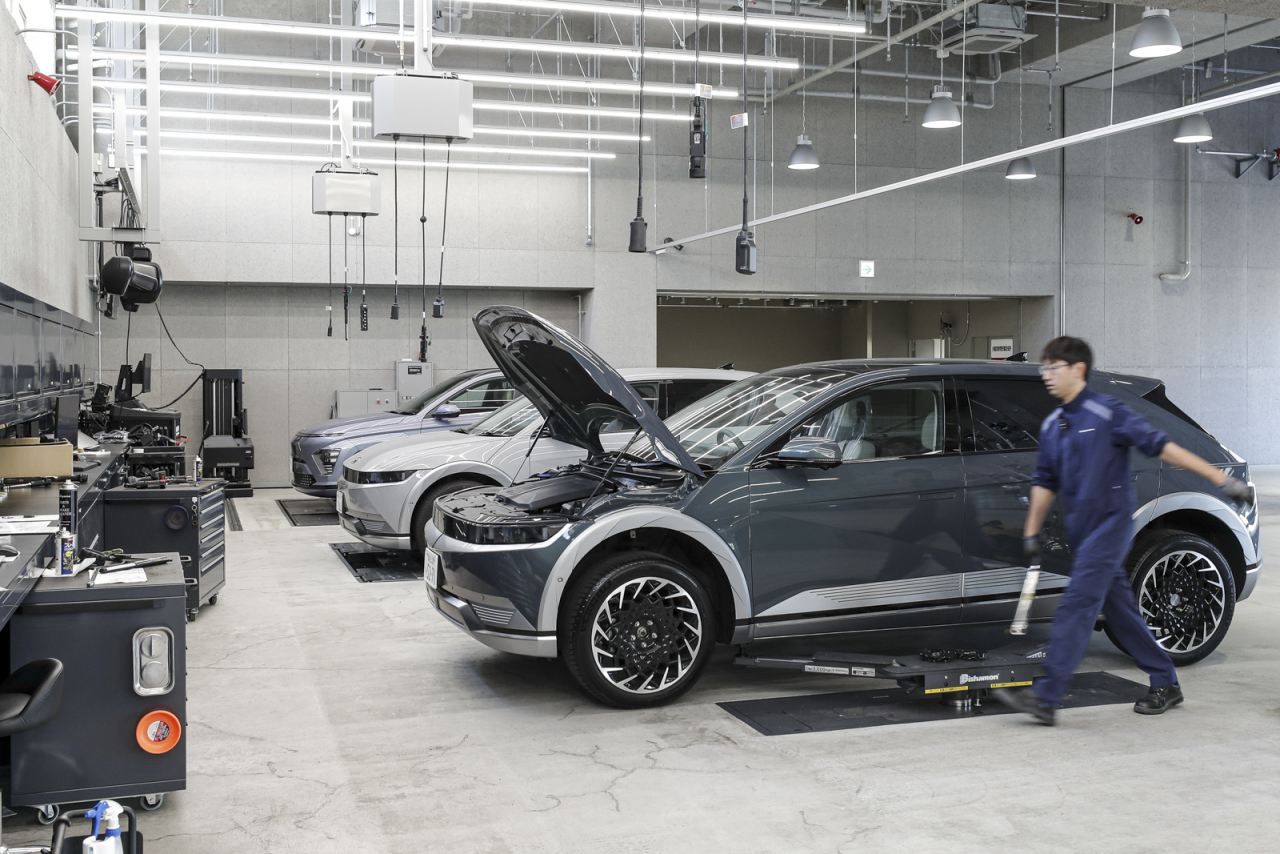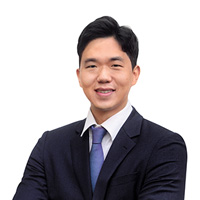[Herald Interview] Hyundai Motor takes step-by-step approach in Japan
S. Korean automaker focuses on improving brand’s image and leading digitalization for car buyers
By Kan Hyeong-wooPublished : Oct. 29, 2023 - 15:36

YOKOHAMA, JAPAN -- South Korea’s leading automaker Hyundai Motor aims to expand its presence in Japan with patience as the market is known for its tough-to-enter nature due to the overwhelming dominance of the country’s homegrown brands such as Honda, Nissan and Toyota.
“Since we started taking orders in May last year and began to deliver cars in August, we have sold over 700 vehicles as of August this year,” said Cho Won-sang, CEO of Hyundai Mobility Japan, in an interview with a group of reporters representing the Korea Automobile Journalists Association at the automaker's Customer Experience Center in Yokohama on Thursday.
“Regarding this, there have been various assessments with some saying that (the numbers) are not up to par. But Hyundai Motor re-entered (the Japanese market) with the mindset of 'mind share' instead of 'market share',” he said.
Hyundai announced its return to the Japanese market in February last year. The reentry came about 12 years after the company decided to pull out of the Japanese passenger car market in 2009.
Mentioning his tenure with the Korean automaker in China, Europe and the United States, Cho pointed out that the Japanese auto market is the most difficult among them.
“There are narrower roads, smaller parking spaces and tariff barriers but the mind of Japanese customers is conservative. The way they treat cars is different from other users. This is a market where people have a lot of affection for their vehicles,” he said.
“So what would it mean if we hastily come here and say that we will sell 10,000 units in three to four years and take up 5 percent of the market share? We figured that getting our brand’s name recognized by Japanese customers here is truly the value that Hyundai Motor can achieve on behalf of Korea, so we decided to take the grand approach of ‘image positioning.’”
The CEO explained that Hyundai Motor’s local strategy is to permeate the brand into the daily lives of Japanese customers. He took the example of car rentals and car-sharing services that can offer experiences of Hyundai Motor vehicles to help customers familiarize themselves with the Korean brand first.

Despite the seemingly slow start in the local market, Cho noted that the Korean automaker’s products have received high praise so far. Hyundai Motor Company’s all-electric vehicle Ioniq 5 won the Japanese best import car of the year in December, the first non-German vehicle to win the award.
“In terms of our ‘mind share, not market share’ approach, we also launched an assurance program in May this year,” he said. Hyundai previously implemented an unprecedented assurance program in the US market during the global financial crisis in 2008 to allow customers who had lost their jobs to return their recently bought vehicles at zero costs.
“Japanese people still have hurdles and guards up against the EV market and there is a lack of necessary infrastructure. They are also concerned about breakdowns and repairs of an EV,” he said.
“Hyundai Motor’s assurance program is to take care of quality and repair costs. The purpose is not about selling cars but sending a greeting to invite them to EV mobility. Then customers can think that Hyundai Motor is sincerely approaching the Japanese market.”
The Japanese assurance program provides free inspections for three years after an EV purchase and free replacement of the battery coolant as well as a coverage of up to 100,000 yen ($668) for exterior damage repairs.
Regarding Hyundai’s online-only sales strategy in Japan where analog and offline marketing campaigns are prevalent, Cho said the automaker is accumulating of data and experiences in the local e-commerce market.
“Some 10 years ago, you went to a tourism company to buy a flight ticket. But who does that now? We buy them with our smartphones,” he said.
“(Buying a vehicle) will be the same. Once the time comes, digitalizing the customers’ purchase journey will be a tall task. That is why we are doing the online sales in Japan right now.”

This article was written in partnership with the Korea Automobile Journalists Association.



















